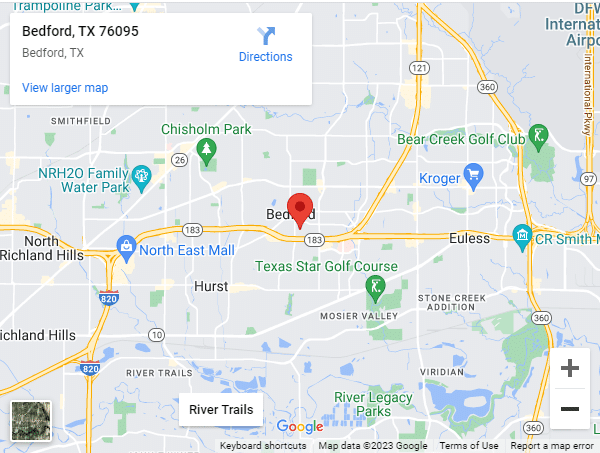Traditional sewer repair methods often involve extensive excavation, resulting in significant disruption to your property and landscape. Trenchless sewer repair has emerged as a more efficient and less invasive alternative, offering numerous benefits for homeowners seeking to maintain or restore the functionality of their plumbing systems.
This informative article will explain the basics of trenchless sewer repair techniques, their advantages, and the factors to consider when deciding if this innovative approach is suitable for your home’s needs.
Trenchless sewer repair is a modern method of repairing or replacing deteriorated sewer lines without the need for large-scale excavation. This advanced technology saves time, money, and inconvenience while minimizing damage to your property and the environment.
Two primary trenchless techniques – pipe bursting and pipe relining – provide effective solutions for a variety of sewer line problems, from blockages and leaks to corrosion and aging pipes.
This article will delve into the details of trenchless sewer repair techniques, comparing pipe bursting and pipe relining and outlining the advantages and potential drawbacks of each method.
Additionally, we will discuss the many benefits of adopting trenchless sewer repair, such as reduced property disruption, cost savings, and faster service.
For expert sewer repair services, including trenchless solutions, in Bedford, TX, and surrounding areas, trust the professionals at Professor Pipes Plumbing & Backflow. Schedule your consultation today by clicking the link below, and let our dedicated team help you determine the best course of action for maintaining or repairing your home’s sewer line system.
Trenchless Sewer Repair Techniques: Pipe Bursting vs. Pipe Relining
Two primary trenchless sewer repair techniques allow professionals to address sewer line issues with minimal disruption to your property:
Pipe Bursting
Pipe bursting is a method used to replace severely damaged or collapsed sewer lines. A cone-shaped bursting head is inserted into the existing pipe, breaking it apart and pushing the fragments into the surrounding soil. Simultaneously, a new pipe is pulled into place behind the bursting head, effectively replacing the damaged line.
Pipe Relining
Pipe relining, also known as cured-in-place pipe (CIPP) lining, involves inserting a flexible, resin-coated tube into the existing sewer line. The tube is inflated, allowing the resin to coat the interior of the pipe and create a new, seamless lining. After the resin cures, a new pipe is formed within the old pipe, effectively repairing any damage or leaks.
Both techniques have their advantages and drawbacks, and the appropriate method will depend on the specific issues affecting your sewer line.
The Benefits of Trenchless Sewer Repair
Opting for trenchless sewer repair offers numerous advantages over traditional excavation methods:
Minimal Property Disruption
Trenchless sewer repair requires only one or two small access points, significantly reducing damage to your landscaping, driveways, sidewalks, and other property features. This means less time and money spent on restoring your property after the sewer line repair is completed.
Time and Cost Savings
Because trenchless sewer repair requires less excavation and labor, the process is typically faster and more cost-effective than traditional methods. In addition, the reduced property disruption means fewer expenses related to restoring your landscaping and other property features.
Improved Sewer Line Performance
Both pipe bursting and pipe relining result in a new and structurally sound pipe, enhancing the overall performance and durability of your sewer line. The trenchless repair methods create a seamless, joint-free pipe that is resistant to tree root intrusion, corrosion, and other common sewer line issues.
Environmentally Friendly
Trenchless sewer repair minimizes disruption to the surrounding ecosystem, as there is no need for extensive digging or removal of large quantities of soil. This makes it a more environmentally conscious choice compared to traditional excavation methods.
Factors to Consider When Choosing Trenchless Sewer Repair
Before deciding on trenchless sewer repair, consider the following factors:
Severity of Damage
Trenchless techniques may not be appropriate for every situation. Extremely severe sewer line damage, such as widespread pipe collapses, may require traditional excavation methods for repair.
Accessibility
Trenchless sewer repair requires adequate access to the sewer line for the trenchless equipment to be effective. Issues such as limited space, utility lines, or other obstructions may impact the feasibility of trenchless repair methods.
Local Regulations
Certain municipalities may have specific rules and regulations regarding sewer line repair techniques. Consult with a professional plumber to ensure trenchless sewer repair is allowed and compliant with local guidelines.
Expert Evaluation
A professional plumber with experience in trenchless sewer repair will be able to assess the state of your sewer line, including factors such as pipe material, age, and damage severity. Their expert evaluation will help determine whether trenchless repair is the most suitable option for your situation.
Conclusion
Trenchless sewer repair offers an innovative and efficient alternative to traditional excavation methods, allowing homeowners to address sewer line issues with minimal disruption, expenses, and environmental impact. Understanding the benefits and limitations of trenchless techniques can help you make an informed decision when facing sewer line repairs.
Don’t let a damaged sewer line stress you out any longer! Trust the skilled team at Professor Pipes Plumbing & Backflow, your go-to sewer line repair company. We offer professional plumbing services, including expert trenchless sewer repair in Bedford, TX, and surrounding areas. Our experienced technicians will work with you to determine the best solution for your home’s sewer line needs. Schedule a consultation today and let us help you get your plumbing back on track.



















